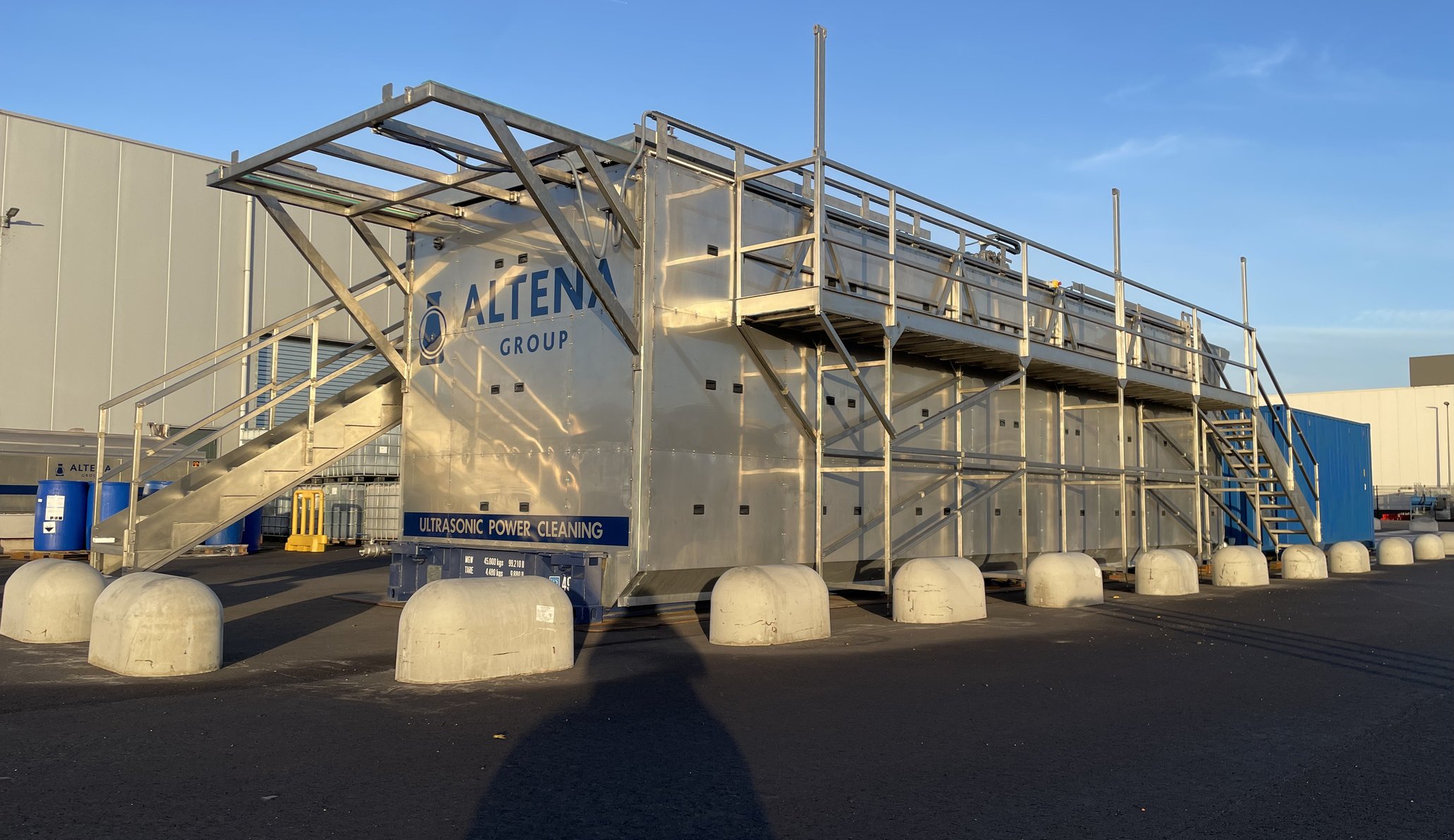Clean thoroughly with sound waves
When the contamination on the metal surface is very stubborn and the products to be cleaned contain spaces with minimal dimensions, ultrasonic cleaning is the best solution.
Ultrasonic cleaning by Altena Industrial Cleaning:
Altena Industrial Cleaning is a leader in chemical technical cleaning and has a strong team of specialists who are well equipped.
Based on a lab analysis of the contamination, the object and the location, we recommend the most suitable cleaning method.
One of these methods is ultrasonic cleaning in combination with chemistry.
- Specialists in chemical technical cleaning;
- Optimized cleaning process;
- Cleaner result;
- Minimal environmental impact;
- Shorter lead time.


Why choose Ultrasonic cleaning?
Ultrasonic cleaning is unique in the way it agitates the material. The ultrasonic unit is filled with water containing chemicals. This method falls under Chemical Technical Cleaning and the SIR CTR regulations apply. Ultrasonic cleaning uses high-frequency sound waves, which implode on the contamination.

Cleans hard-to-reach areas
The high-frequency sound waves reach places where cleaning by circulation or high pressure is not or hardly possible.
Improved capacity
Ultrasonic cleaning increases the flow volume and heat transfer rate of the heat exchanger. Heat exchangers are returned to service at ~95% of design performance. This results in higher efficiency with a longer tool life.
Shorter turnaround time
The form and side of contamination are free with ultrasonic cleaning, so there is often a shorter lead time to clean an object than with other methods.
A safe way of cleaning
You do not have to be in the vicinity for cleaning and you are therefore out of the line of fire for mechanical, thermal, and chemical hazards. Hoisting the objects in and out requires the correct way of working and can also take place out of the line of fire.
Reduced emissions
The ultrasonic unit is insulated and equipped with automatically closing lids. Before switching off, if required by the substances present, the fumes under the covers are first extracted to a scrubber.
Water
The water with the cleaning product is continuously filtered in order to capture the larger undissolved parts and insoluble parts. This increases the service life and the dissolving power of the cleaning fluid.
Waste
Continuous skimming of the floating layer immediately separates the oil layer. Depending on its composition, it can be reused or disposed of with a high energy value when incinerated.
Lower consumption of raw materials
Water consumption is only ~25% compared to high-pressure water cleaning. Cleaning product consumption is lower due to repeated use. Reuse cleaning fluid by using a storage tank.
Cleanliness level
The degree of cleanliness is determined in advance on the basis of contamination. Ultrasonic cleaning reduces the throughput time compared to other cleaning methods. The service life of the object, on the other hand, is much longer due to the higher degree of cleanliness.


Looking for the best solution for waste streams
Our goal is to give each waste stream a specific treatment to remove contamination, such as physical/chemical separation, neutralization or processing at our own water treatment plant.
We use innovative and proven techniques to purify the waste streams, minimizing the impact on the environment.
Benefits of Ultrasonic Cleaning
- Removal of pollution in hard-to-reach places;
- The cleaning time is considerably shorter than with normal degreasing or pickling;
- The cleaning process is very thorough;
- Cleaning can be carried out with environmentally friendly water-based products.
Your waste is our waste
As a registered Transporter, Collector, Trader, and Intermediary (VIHB) of waste, as well as the possibility to process waste, flows yourself, our specialists will consult with you to find the best solution to process the waste as efficiently as possible. VIHB
In our own treatment plant, we are able to remove most contamination from watery waste streams. Altena Group takes care of the wastewater treatment of customers and third parties, both in IBCs and in tank trucks by means of the ONO (Detoxification, Neutralization, Dewatering) installation. By making as much use as possible of the waste-to-waste principle during processing, the consumption of new additives is limited as much as possible.

